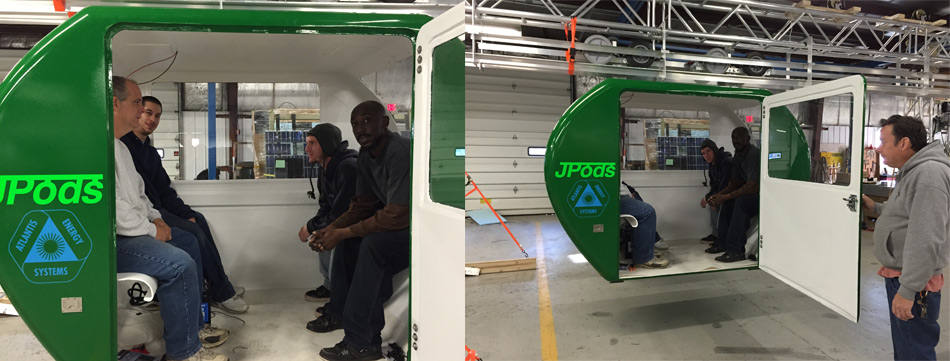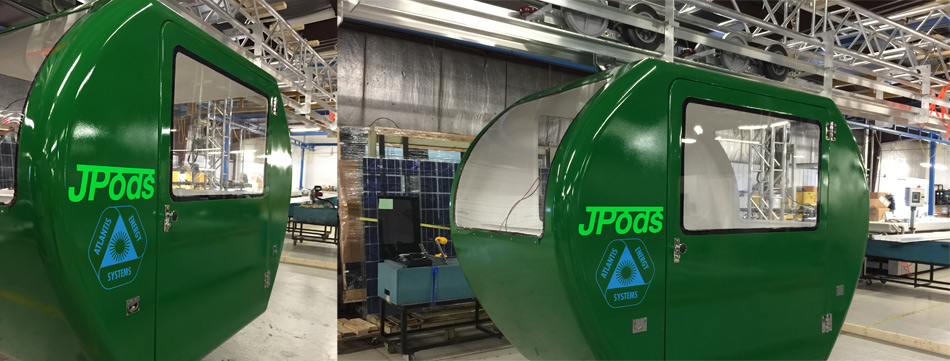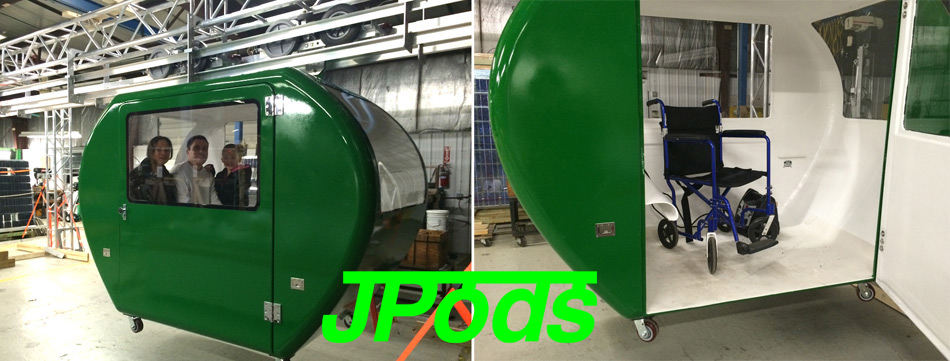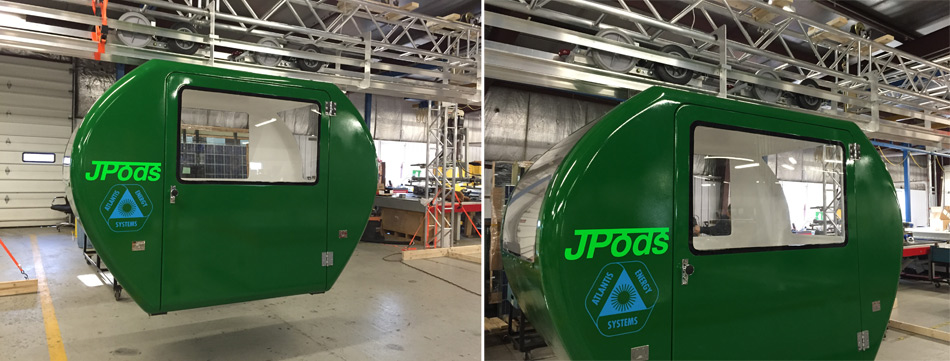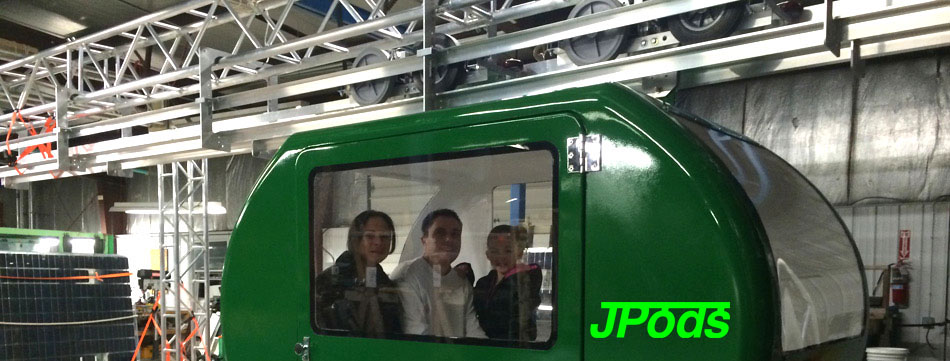Secaucus
- In 1972, President Nixon sent his daughter Tricia to open the Morgantown PRT. As with the Clean Air and Water Acts it was part of a plan for energy self-reliance. Nixon: “At the end of this decade, in the year 1980, the United States will not be dependent on any other country for the energy we need. We will hold our future in our hands alone.” (The US currently imports 6.5 million barrels of oil a day, 1/3rd of our use).
- In 1975, Congressional Study PB-244854, “Automated Guideway Transit”, was published to identify solutions to the hardships of the 1973 Oil Embargo. It found that PRT was a solution and that government “institutional failures” blocked urban transportation innovation for “four to six decades (aside from some relatively minor cosmetic changes)…
- In 2004, NJ Legislature Law Directing the Study of PRT A2031. This law is vividly clear in its instructions to NJDOT:
As new technologies have been made viable, the State has benefited from being an early adopter….
It is in the State’s economic interest to investigate new types of service which may improve the usefulness and integration of existing platforms, provide fast, inexpensive travel options, reduce capital costs of projects, and reduce pollution from motor vehicle travel. Personal Rapid Transit (PRT)….
According to the Federal Transit Administration, average capital cost per twoway mile for heavy rail is $150 million, and for light rail is $70 million. For operating cost per passenger mile: heavy rail is $1.20, light rail is $1.80….
The transportation system of New Jersey may benefit greatly from fostering a niche role for profitably managed rapid transit as a supplement to its current system. It is in the State’s interest to consider the integration of PRT into its transportation system
-
- 2007. New Jersey Legislature Study by BAH 070515 Associated TRB slidedeck.
- Based on the value of PRT the study forecast the following adoption:

- In 2005, Princeton published Personal Rapid Transit (PRT) for New Jersey. This defined a network to solve traffic and pollution problems for the entire state of New Jersey.
- In 2014, Secaucus Law 2014-23, Performance Standards. This law applies to transport infrastructure the frame work that ended the century of rotary telephones in communications. It restore transport infrastructure to free markets. A Letter of Interest was established for funding the Secaucus Network to be the World’s First Solar-powered Transport Network.
-
- Constrution must be privately funded.
- Systems must operate without government subsidies.
- Efficiency must exceed 120 passenger-miles per gallon, 5 times the efficiency of highways.
- Networks pay 5% of gross transportation revenues for non-exclusive use of the airspace over approved public Rights of Way.
- Safety must exceed transport modes already granted use of rights of way.
- Environmental approvals will be based on energy saved relative to modes already granted use of rights of way.
- Regulation will be by theme park standards (ASTM Technical Committee F24) with a safety record thousands of times better than highways.
- 2014 presentations to NJDOT, NJTransit, and NY-NJ Port Authority. Traffic costs the people of New Jersey more than half the 560 lives per year and $36.8 billion per year:
- $13.4 billion per year for gasoline (462.9 trillion BTUs, 114,500 BTUs/gallon, $3.30/gallon).
- $14.8 billion per year on accidents
- $8.6 billion per year on congestion
- In 2015, in seeming violation of the will of the New Jersey Legislature, NJDOT blocked the Secaucus solar-powered mobility network:
The NJDOT has reviewed PRT systems in the past and concluded that there is currently no practical application for these types of systems on either State or Interstate highways.
Thank you for sharing the information provided to Mr. Dube.
Joseph D. Bertoni
Deputy Commissioner
Will of the New Jersey Legislature as stated in NJ Law 2004-A2031:
c. It is in the State’s economic interest to investigate new types of service which may improve the usefulness and integration of existing platforms, provide fast, inexpensive travel options, reduce capital costs of projects, and reduce pollution from motor vehicle travel. Personal Rapid Transit (hereinafter “PRT”) is one such technology currently being made available.
d. According to the Federal Transit Administration, average capital cost per two-way mile for heavy rail is $150 million, and for light rail is $70 million. For operating cost per passenger mile: heavy rail is $1.20, light rail is $1.80. However, PRT has the potential to cost 37 much less than heavy and light-rail applications, carry high capacity, be flexibly located, and require much less physical “footprint,” potentially reducing easement impact for currently scheduled projects. PRT studies have shown a capital cost of about one-tenth the cost of existing rail technology, with similarly low operating costs.
Safety Record
Article from Oct 13, 2016 Boston Globe: NJ Transit leads list of accidents, safety fines
The validity of these statement is proven by the 110 million oil-free, injury-free passenger-miles achieved by the PRT network in Morgantown, WV. The Morgantown network pays for itself about every 5 years (independent audit).
Historic vote
On June 24, 2014 Council for Secaucus, NJ passed Ordinance 2014-23 making Performance Standards (download) for sustainable infrastructure the law. We believe Secaucus’ leadership will set a world standard in governing to solve congestion, oil-dependence, and climate change. Access to non-exclusive use of rights of way are based on:
Repeat success of Secaucus:
|
Because of the leadership in Secaucus, JPods will start building a mobility infrastructure with access to all, regardless of age, ability, or wealth. People and cargo can move on-demand without congestion. Each pod in the network will exceed 260 passenger-miles/gallon, won’t emit green house gases, and will be 1000 times safer than traveling in cars on the streets below.
Background documents
- C_NJ’s $13.5 Billion per Year Gasoline Costs
- D_NHTSA_$871 Billion per Year Cost of Traffic Accidents, $14.4 Billion per Year in NJ
- E_Report NJDOT on the $8.6 Billion per Year Cost of Congestion
- F_Constitutional Basis for Restoring Free Markets to Transport Infrastructure
- G_Mayor of Morgantown Letter on the Effectiveness of the PRT Network in Morgantown
- H_SenateLetter on PRT as the Solution to the 1973 Oil Embargo
- I_7503_Congressional Office of Technology Assessment Study PB-244854 on PRT as the Solution to the 1973 Oil Embargo
- J_WVU PRT Benefit Cost Report_2010
- K_New Jersey Legislature Study by BAH 070515 Associated TRB slidedeck.
Economic Development documents
Help design the networks by:
- Clicking on a map to vote for where you want stations.
- Learn to design networks in SketchUp.
- Understand network components.
The first phase of building a JPods network in Secaucus will consist of erecting a small section of guideway, about 100 ft long. This length of track will be used to refine mechanical aspects of a full size network.
The second phase of building the JPods network will consist of building a larger section of guideway, about 300 yards. The section of guideway will be built to commercial use standards.

It will be above grade and will cross over an automobile right-of-way. The guideway will be covered with a solar canopy, capble of providing clean energy to the system. The main purpose of this section of track will be to prove out the cost per mile of laying down guideway. The section of guideway will also be used to showcase the technology to other cities.
The third phase will consist of extending the 1/4 mile guideway to 3 miles, connecting the Frank R. Lautenberg Rail Station at Secaucus Junction to the Meadowlands sports Complex. Along the way, there will be many stations, essentially making most point-to-point transits within the town less than 15 minutes. This inlcudes walking to and from the stations. We have created an interactive map, where you can help the city determine the locations of future stations.
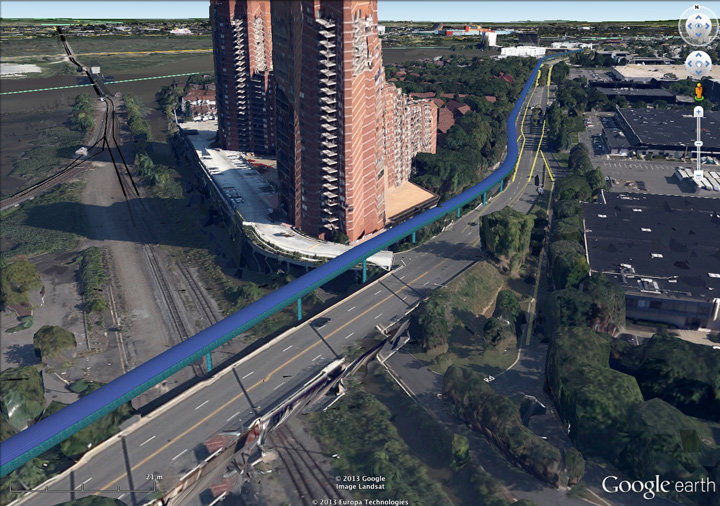
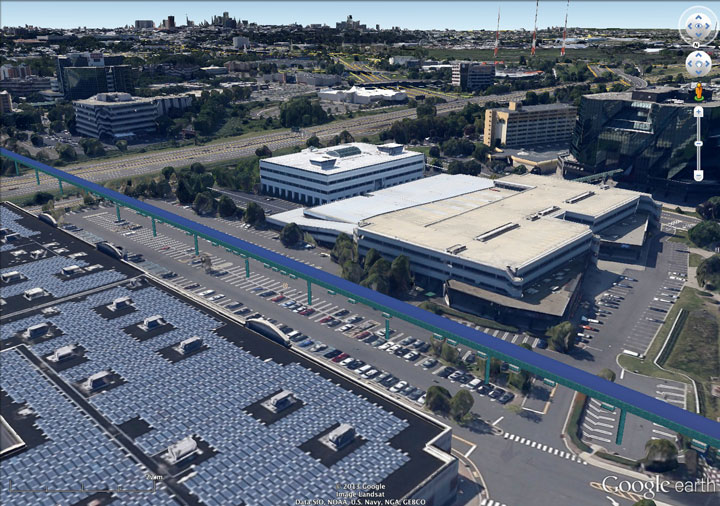
As Automated Guideway travel becomes ubiquitous with Secaucus NJ, it will become the hub for an expanded network reaching out to other parts of New Jersey and New York. The video below shows how JPods might be used to cross the George Washington Bridge.


